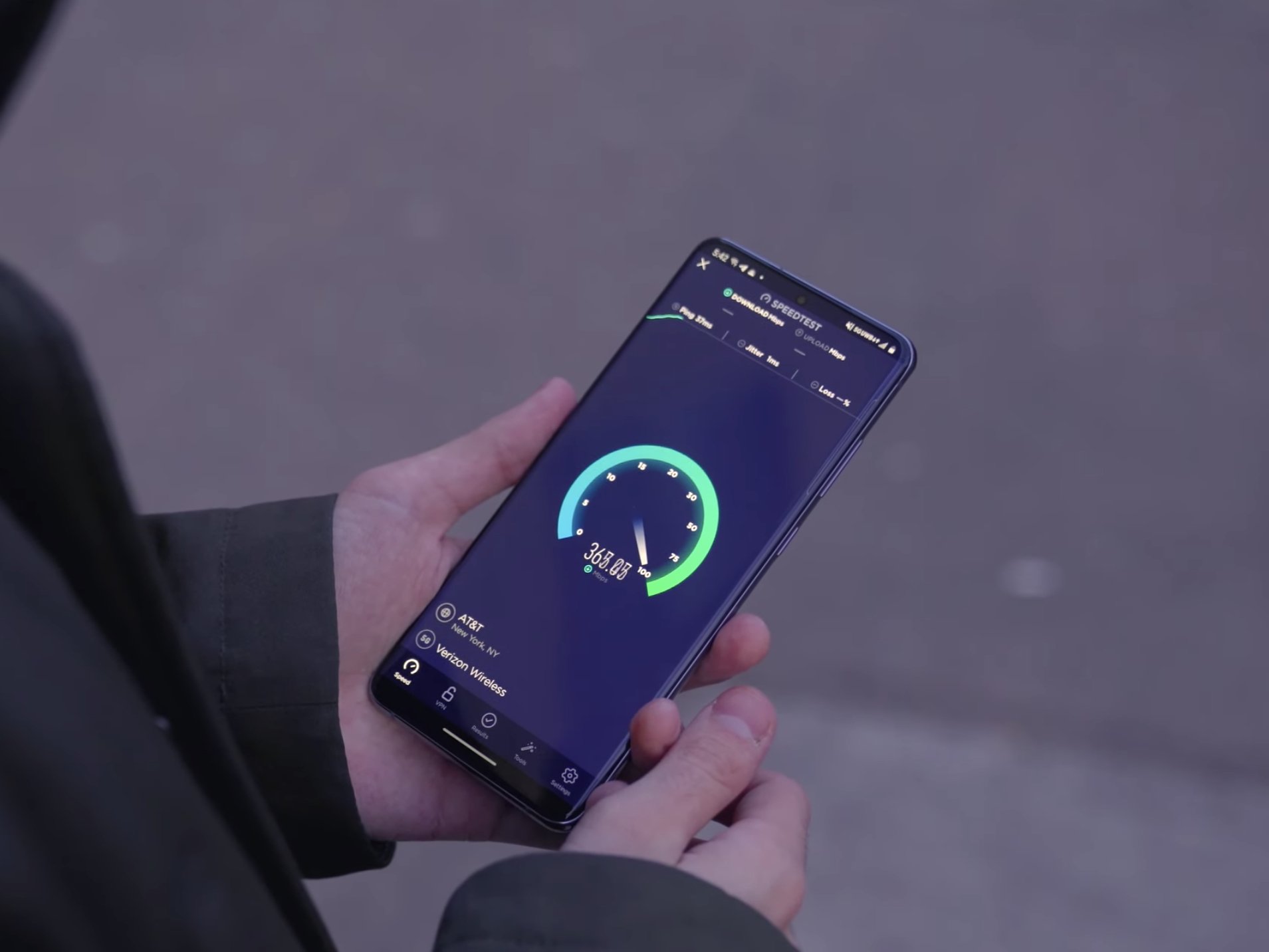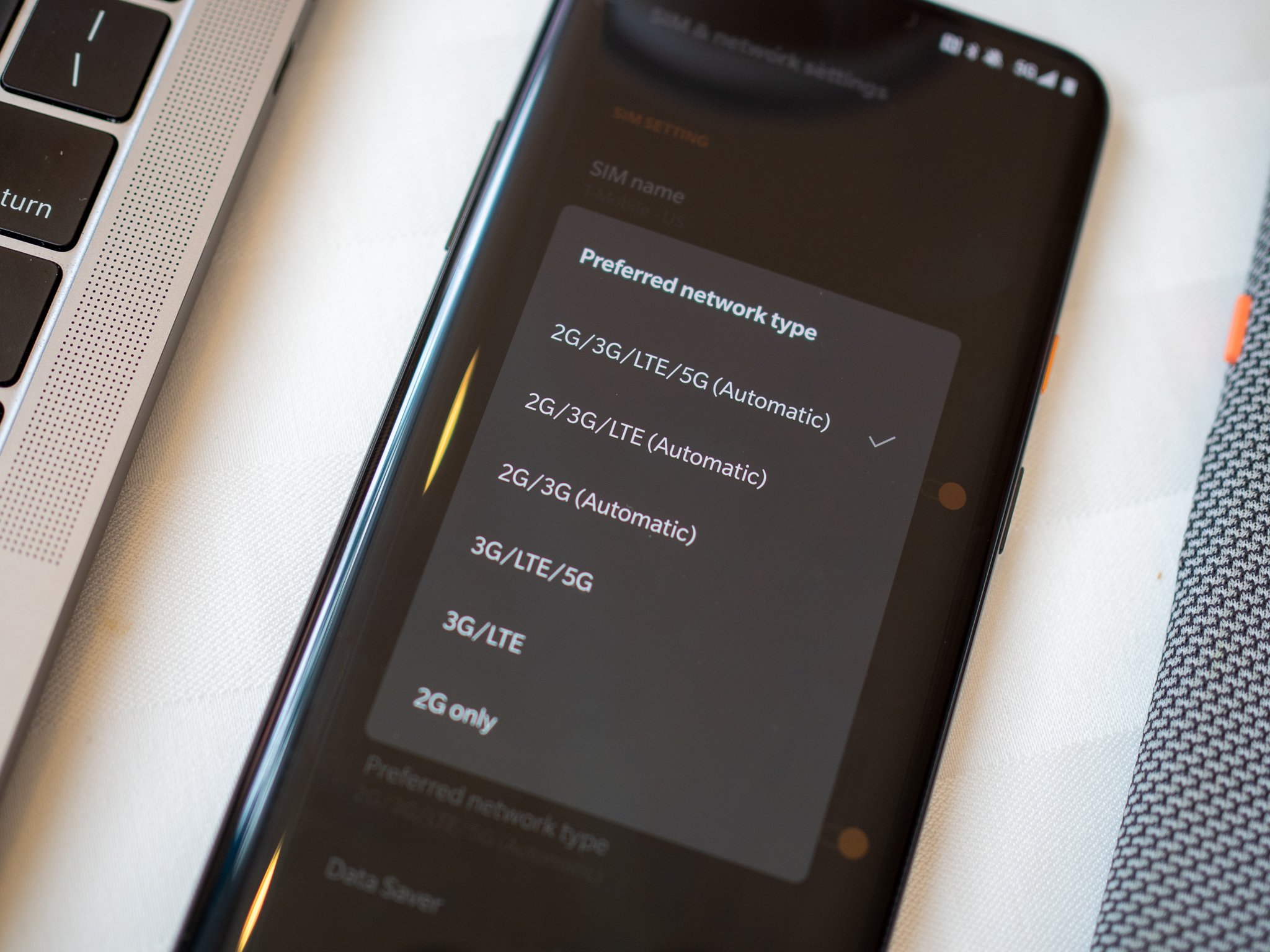Consumers are going to have to learn about 5G and its fundamentals because your carrier is more concerned with control.
When I found out that T-Mobile had "unlocked" 5G where I live, I was excited to try it. I have access to all three major carriers (press F for Sprint in the comments) as well as several MVNOs but T-Mobile works best here, so my personal line is on the magenta giant. My work phone happens to be on Google Fi, and it meant that I also had 5G there, too. I was all WOOHOO! and itching to try it.
I did. It sucks.
I knew it was going to suck and I knew why, so I wasn't really disappointed. For starters, T-Mobile coverage maps have a very different definition of "excellent coverage" than you or I do, so the signal isn't the best in my sleepy little town. The 5G T-Mobile likes to remind us all it has from coast to coast across the U.S. is what's known as low band 5G, which isn't designed to be faster than LTE; it's about more bandwidth to carry more data. That means it's about 20Mbps slower than my LTE connection.
Everything good and everything bad about 5G is subject to change at any time.
But that's going to change soon because T-Mobile has just started utilizing all the mid-band 5G spectrum it got from the Sprint merger, and it will be a good bit faster. Only I might not have a phone that can use it because T-Mobile could place restrictions on unlocked phones built before a certain date to (legitimately) keep the mid-band 5G network running well.
And once the government figures out a way to auction off some more spectrum I might even have millimeter-wave (what Verizon likes to call UWB) 5G through T-Mobile after I — you guessed it — buy a new phone.
5G is frustrating. Even if you have to look up all of this stuff as part of your job, it can still be confusing at times, so I know the "average" consumer (I hate that label but it fits) thinks 5G is just 5G. I also don't recommend trying to look it all up yourself and instead read our concise explainer. Your sanity will thank me.
But 4G was frustrating, too. You had fake 4G from T-Mobile and AT&T who both labeled a good and fast HSPA network with the 4G tag, you had even faster LTE 4G from all three carriers, and to be sure that the phone you just bought worked correctly, you pretty much had to buy it at a carrier store. 5G can't be any worse, right? Wrong.
The state of 5G today:
- Slower but efficient low band 5G is being rolled out from all three carriers and decent coverage.
- Mid band 5G is being rolled out as fast as it can be, but coverage pales in comparison to low-band.
- Millimeter-wave 5G is available in tiny spots in the strangest places (Kalamazoo and Los Angeles both say hello) with a range that is literally only a block or two.
- T-Mobile has a giant head start in the low-band and has almost all the mid-band currently available. This is a flip-flop of the LTE rollout, where Verizon had the insurmountable lead. There's a great deep dive about that at Light Reading if you like network nitty-gritty.
All of these also use LTE most of the time, because carrier LTE networks are old enough to be more robust in more places. When your status bar says 5G, you're probably still using LTE. That's not a bad thing, either, because you don't really benefit from 5G when you're doing almost anything your phone does. At least, not yet. This is only for 5G in North America; when you factor in the rest of the world the picture gets even worse, but mostly for the same reasons.
The 5G specifications are still evolving.
But the state of 5G today means nothing. I would not be surprised one bit if the 5G phone you buy today doesn't take advantage of any improvements carriers will have made in 2021. Unlike LTE at launch, the 5G specifications just aren't finished.
One thing about LTE's rollout that will feel very familiar with 5G is how carriers will try to control access and force you to buy equipment from them. Except this time it will be worse, and it will go on much longer.
You are going to need a new phone to take advantage of the changes from today forward.
The endgame of 5G is what's called SA. Right now, most 5G is NSA. These acronyms stand for Stand-Alone and Non-Stand-Alone and it seems like everything you see about SA versus NSA 5G is complicated and confusing, but it's really not. Stand-Alone mode 5G means you never have to switch to an LTE connection and your device will never automatically switch like it probably does now.
The ideal 5G network of the future will be a mix of low-band SA 5G for most of the U.S. and Canada, mid-band SA 5G for suburbs and population centers, and millimeter-wave SA 5G for super-packed spots in downtown metro areas. It's just not feasible to do it any other way in countries as big as the U.S. and Canada, where much of these countries are rural and can't support a small site cell tower for millimeter-wave every 100 yards.
There are pros and cons to both. SA 5G is going to destroy batteries, but it's going to ensure that you can use your network connection in crowded places. NSA 5G is easier on your phone's battery, but you're not going to have 5G on-demand all the time. Right now on an NSA 5G network, doing something like watching an HDR Netflix show or downloading a big file (a lot of tiny ones will definitely do it) will probably trigger your phone to use 5G.
Your 5G phone probably uses LTE most of the time.
That's good for two reasons: faster speeds if you're standing close to a millimeter-wave cell site and more bandwidth (and thus less network congestion) if you're using low-band 5G.
The NSA 5G specifications will change, maybe even several times, in the next two years. This happens when something both new and different comes around. Your carrier is definitely working out its NSA plans right now. The first real NSA 5G networks are going to be a patchwork quilt of workarounds and updates by the time they can be called "finished". It is going to be a mess where phones are going to be locked to using only one network, not by the carrier but because it just can't work on another "type" of 5G network.
Your carrier isn't going to tell you any of this. In fact, the idea of you buying a phone that might be locked to their network on the technology side is great news for them. It means you will keep paying them every month because you don't want to buy a new phone, so they don't have to work hard to keep you a happy customer. It sounds nefarious, but it's all just business. And no, your carrier isn't any better than the rest and doesn't love you more if you defend them all of the time.
None of this is meant to discourage you. On the contrary, I'm excited to see 5G tech evolve and understand that there are going to be a lot of growing pains. But I also know that carriers are going to use those growing pains to their advantage, and you need to know a little bit about how 5G really works and the state it is in today.
Outside of the "Verizon tax" for unlocked and unbranded phones capable of millimeter-wave 5G like the Pixel 5, having these technologies doesn't hurt or change anything, and you will probably get some use out of 5G before it's time for everything to change. I can only suggest we all try to learn as much as we can before we whip out the plastic and buy a phone or sign up for 5G service.
Get More Pixel 5
Google Pixel 5
Source: androidcentral




